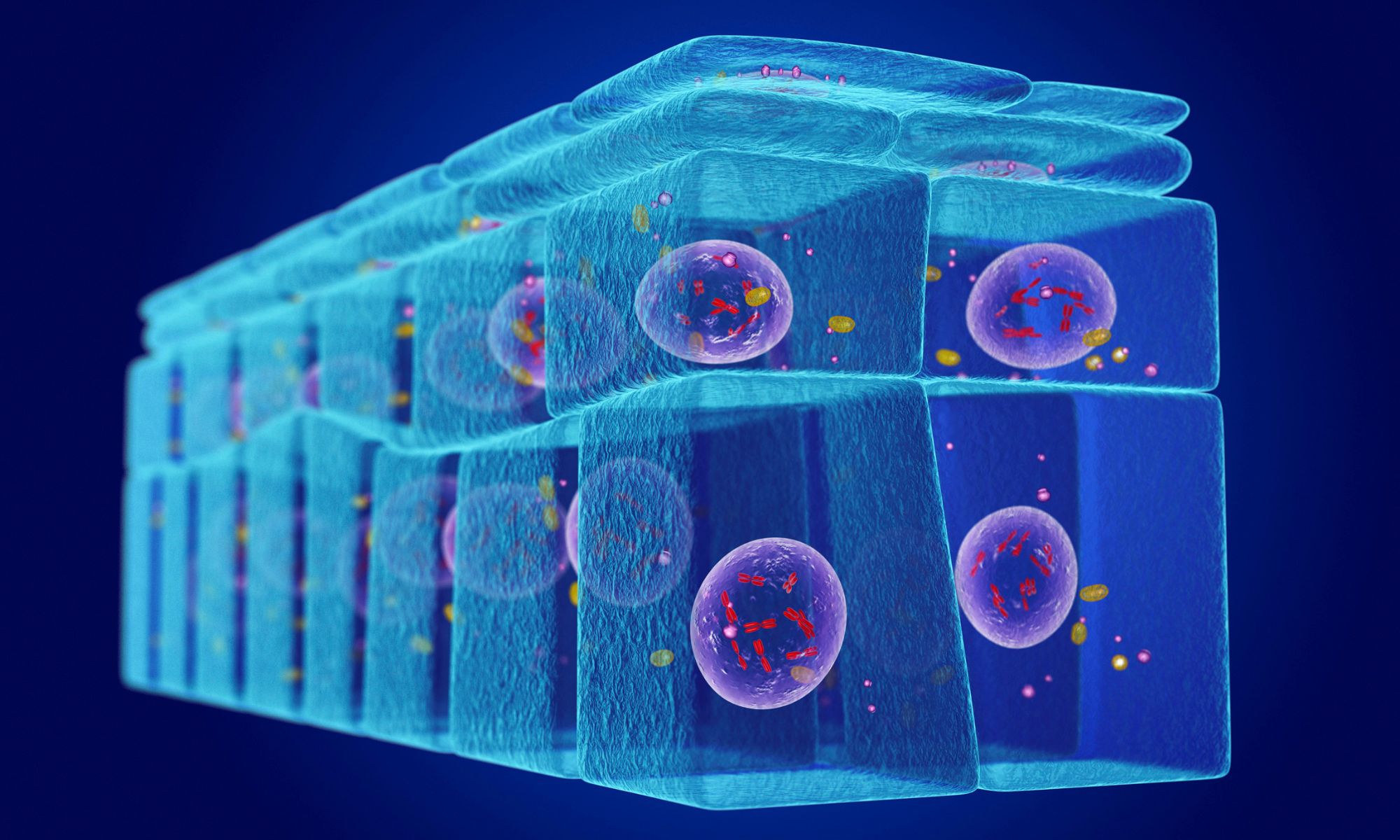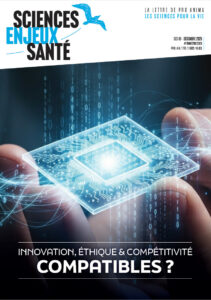
News on non-animal methods
SEPT 29 - OCT 03, 2025
NEWS, REPORTS & POSITION STATEMENTS
1. European Commission scientific strategies for sovereignty
Strategy on Research and Technology Infrastructures
On 15 September 2025, the EC adopted a new, long-term European Strategy on Research and Technology Infrastructures. Research infrastructures and technology infrastructures are the backbone of Europe’s research and innovation system. They range from advanced laboratories, large scientific instruments and data centres to pilot lines, testbeds and clean rooms. Together, they support the full innovation cycle – from frontier science to the validation and deployment of new technologies. This makes them essential for Europe’s scientific excellence, competitiveness and technological sovereignty.
AI in science strategy coming up soon
During its annual Research and Innovation Days conference in Brussels on September 17, the European Commission announced the wish to adopt its AI in science strategy on October 7. The strategy will pave the way for the creation of the Resource for AI Science in Europe (Raise), which will support the use of AI in science and science for AI development. The Commission plans to launch an official call for the establishment of AI gigafactories, which will specialise in the training of very large AI models, towards the end of the year.
2. OASIS Consortium: Integrating Multi-Omics Technologies to Transform Chemical Safety Assessment
Next Generation Risk Assessment (NGRA) employs New Approach Methodologies (NAMs), such as novel in vitro assays coupled with exposure modeling, to minimize the use of animal models which can fail to predict specific biological effects in humans.
‘Omics for Assessing Signatures for Integrated Safety (OASIS) Consortium combines multi-omics technologies and multiple cell model systems (ranging from simple cell cultures to complex organotypic models). By using compounds with well-characterized in vivo and in vitro nonclinical safety and toxicology data related to adverse organ specific effects in rats and humans, OASIS aims to create novel integrated methods that improve safety assessment while reducing animal use.
Read the article on Toxicological Sciences
3. OOC regulatory perspective
Review on organ-on-chips for medicines safety assessment: A European regulatory perspective
This review examines the development of organ-on-chips (OoCs) from 2010 to 2020, focusing on their use in safety testing of medicines, the different types of OoCs developed, and the organs they mimic. In addition, the types of medicinal compounds tested are reported. The review also highlights the challenges and opportunities for OoCs to be accepted by medicines regulators, such as the European Medicines Agency.
4. Incorporating NAMs into medicines development: Insights from regulators, industry and academia
A new report from the NC3Rs, in collaboration with The Association of the British Pharmaceutical Industry (ABPI) and UK Medicines & Healthcare products Regulatory Agency (MHRA), explores how New Approach Methodologies (NAMs) can transform the way medicines are developed – harnessing cutting edge human-relevant technologies and reducing reliance on animal testing.
“This report reflects the growing momentum across the scientific community to advance human-relevant approaches in drug development.”, says Fiona Sewell, Head of Toxicology, NC3Rs.
Read more and download the report
INTERVIEWS, NOMINATIONS & AWARDS
5. Launch of the Standardized Organoid Modeling (SOM) Center by the NIH
The National Institute of Health (NIH) announced the award of contracts for launching the Standardized Organoid Modeling (SOM) Center, a national resource that will be dedicated to using cutting-edge technologies to develop standardized organoid-based New Approach Methodologies (NAMs) that deliver robust, reproducible, and patient-centered research findings to reduce reliance on animal modeling.
With contracts totaling $87 million for the first three years, the center will be housed at the Frederick National Laboratory for Cancer Research (FNLCR), a research facility supported by NIH’s National Cancer Institute (NCI).
TOOLS, PLATFORMS, CALLS
6. NIH BRAIN Initiative: Theories, models and methods for analysis
The National Institute of Health (NIH) has re-issued a BRAIN Initiative funding opportunity on September 16th. The goal is to provide extramural research support for the Brain Research through Advancing Innovative Neurotechnologies (BRAIN) Initiative’s aim of revolutionizing our understanding of the brain and its function in unprecedented detail. The NIH BRAIN Initiative’s focus is foundational development of new technologies and tools to map, monitor, and modulate brain circuits in model systems and humans – toward the ultimate goal of treating and curing human brain disorders.
First application deadline: October 28, 2025.
7. INSERM’s Call for projects: Breakthrough Technologies in Oncology (TREK)
Inserm’s call for projects entitled “Breakthrough Technologies in Cancer Research (TREK)” will open on October 14, with the aim of supporting research into different types of cancer.
It aims to fund the acquisition of high-tech equipment in order to obtain new types of data or significantly improve the acquisition of conventional data. This equipment will support research into diseases such as breast cancer, lung cancer, and blood disorders.
Read the call for proposals (FR)
8. NIH Common Fund Replication Prize
The NIH Common Fund has teamed up with NASA’s Tournament Lab to launch the Replication Prize, a competition to advance scientific research by collecting ideas and strategies to make important lines of biomedical research more replicable.
The Replication Prize will crowdsource ideas to identify high impact areas of science for future replication efforts and to reward efforts in increasing replicability in important areas of biomedical research. The goal of this prize competition is to boost current replication efforts and encourage a culture change in biomedical research where replication activities are a routine part of conducting research.
INDUSTRY, BIOTECH & PARTNERSHIPS
9. Strengthening the competitiveness of EU in vitro biotechnologies
The EU has been a leader in research and development of in vitro biotechnology, such as human 3D cell and tissue models used in disease research and drug development. However, it is struggling to convert scientific discoveries into business creation and competitiveness within a rapidly growing international market.
The ‘Boosting Biotechnology and Biomanufacturing in the EU’ Communication highlights the crucial role of biotechnology for enhancing the competitiveness and modernisation of European industries. Biotechnology can address pressing societal and environmental challenges, including climate change, sustainable use of natural resources, food supply, and human health.
10. A 3D multi-omic platform reduces new therapies development times
Enhanced Genomics, the biotechnology company pioneering 3D multi-omics to rapidly identify genetically validated, high-confidence drug targets for common diseases, announced that it has completed a financing round, bringing its total Series A funding to $19 million. Investors in this latest round include BGF, Parkwalk, and Meltwind.
The funding will be used to develop Enhanced’s internal therapeutic pipeline in common diseases, including autoimmune conditions such as inflammatory bowel disease. This latest investment will enable the company to increase its output through strategic partnerships with pharmaceutical and biotechnology companies, leveraging the identification of new targets and asset-based opportunities to drive long-term growth.
Read more (FR)
SCIENTIFIC DISCOVERIES & PROTOCOLS
11. 3D printed mini-placentas offer a new way to study pregnancy complications
Studying the placenta during pregnancy is difficult, as taking samples risks introducing infection or triggering miscarriage. And placental tissue after birth is very different from its early form. Animal placentas are often distinct from human ones, so studying them is of limited use. Pregnancy researchers have been left in the dark on the critical early stages of placental development.
In new research published in Nature Communications, researchers report the first 3D-printed artificial mini-placentas. These “placental organoids” are an advance over earlier efforts, and will give scientists new ways to study pregnancy and shed light on complications like preeclampsia.
Read the publication in Nature Communications
12. Database-calibrated toxicity values for human health assessment based on existing toxicology data
Traditional human health assessments rely upon expert judgment of dose – effect linkages observed in animal toxicology or human studies. Because both collection of toxicology data and synthesis of information might take multiple years to complete, there are relatively few available assessments for decision-making.
To address the need, The US Environmental Protection Agency (US EPA) developed the database-calibrated assessment process (DCAP) to generate oral, non-cancer human health toxicity values that builds on previously published approaches and guidance. Traditional and process-specific uncertainties are incorporated to derive a calibrated toxicity value (CTV), defined as an estimate of a daily oral dose to the human population that is likely to be without appreciable risk of adverse non-cancer health effects over a lifetime. A new review presents the rationale and methods for the approach, resulting in reporting of 1001 CTVs for chemicals that currently lack a human health assessment.


